Surrey
THE KING’S STONE ∗ CRADLE OF ENGLISH LIBERTY
∗ ENGLAND’S BIGGEST DAY OUT
∗ AN ANCIENT ENGLISH STORYBOOK
The Great Seal of King John, attached to England’s earliest defence of human rights, Magna Carta.
SURREY FOLK
P.G. Wodehouse ∗ Dame Peggy Ashcroft ∗ Sir David Lean ∗ Roy Hudd ∗ Kate Moss ∗ William Cobbett ∗ Aldous Huxley ∗ Mary Wesley
∗ Dame Margot Fonteyn ∗ Delia Smith ∗ Eric Clapton
Kingston-upon-Thames
Set in greenery beside the slow flowing Thames, the bustling Surrey town of Kingston was royal long before its mighty neighbour London. Its regal heritage dates back nearly 1200 years to 838, when King Egbert, King Alfred’s grandfather, held a Great Council under the trees here. Kingston’s proudest possession can be found in front of the modern Guildhall, set on a crude base, surrounded by ornamental railings and open to the wind and rain: the earliest throne of English kings, the King Stone on which seven Saxon kings were crowned – the first Kings of England.
In 901 King Alfred’s son Edward the Elder was enthroned at Kingston, in St Mary’s Chapel, then Athelstan (925), who won Northumbria at the Battle of Brunanburgh, Edmund the Magnificent (940), conqueror of Cumberland, Edred his brother (946), Edgar the Peaceful (958), later confirmed as the first true King of England at Bath Abbey by St Dunstan, and then Edward the Martyr (975), murdered by his own stepmother at Corfe Castle to make way for Ethelred the Unready, crowned at Kingston in 979.
Across the market-place, the dimensions of the Saxon chapel of St Mary, in which the coronations took place, are marked out beside the present church of All Saints. Undermined by grave-digging, the chapel collapsed in 1730, killing the sexton and injuring his daughter Esther.
Encased inside the stone and brick 14th-century tower of All Saints is the original Norman chalk tower, possibly the oldest chalk structure in England.
Kingston hides its ancient heritage well, but in 1977, on her Silver Jubilee, Elizabeth II, Queen of England, the oldest ever English monarch, came to the town where her line began and unveiled a stone commemorating one of the earliest English monarchs, her Saxon predecessor, Edward the Elder.
Kingston grew up on the Hogsmill River where it enters the Thames. The Clattern Bridge over the Hogsmill near the market-place dates from the 13th century and is one of the oldest bridges in Surrey. The medieval name ‘Clateryn-brugge’ is descriptive of the clattering of hooves as horses cross the bridge.
All Saints, Kingston
Sir John Millais painted a willow tree growing beside the Hogsmill, upstream at Ewell, for his picture of Ophelia, and Holman Hunt also painted the Hogsmill in The Light of the World.
Runnymede
No freeman shall be seized, or imprisoned, or disseised, or outlawed, or any way destroyed, nor will we go upon him, nor will we send upon him, except by the lawful judgment of his peers, or by the law of the land. To none will we sell, to none will we deny, to none will we delay right of justice.
MAGNA CARTA
Spread at the foot of Cooper’s Hill, between Egham and the River Thames, are the lush green meadows of RUNNYMEDE which, in the summer of 1215, were witness to the first faint stirrings of English freedom, the first real attempt to limit the absolute power of the King and recognise the rights of ordinary Englishmen. On the 15th day of June, King John, the worst King ever to sit on the English throne, angrily stamped his royal seal on the preliminary draft of the Great Charter that forms the foundation stone of English liberty.
MAGNA CARTA was the result of King John’s abject misrule. His arbitrary raising of taxes to pay for disastrous foreign wars, and his extravagant injustices, forced the squabbling barons to unite against him, and in Stephen Langton, Archbishop of Canterbury, they had a brilliant and articulate champion. John was summoned to Windsor, and for several days the King, representatives of the noblemen, the Church and the merchants of London, and even some ordinary English yeomen, gathered beside the Thames on the broad green sward of Runnymede to thrash out an agreement that would answer 49 grievances drawn up by the barons.
Although the Magna Carta is rough and clumsy, and by no means the most effective or far-reaching declaration of basic freedoms and rights ever written, it is nonetheless the most revered, by virtue of being the first. It is the raw template from which all other charters draw their inspiration, and forms the basis for the constitutions and statutes of countries across the English-speaking world. It underlies the American Constitution and Bill of Rights, and even the European Convention for Human Rights.
Derby Day
In 1618, during a severe drought, an Epsom boy took his cattle to drink from a spring on Epsom Common – and found to his consternation that they refused. Investigations revealed the water to be very salty, but while cows might not have liked it, human folk found that a quick draught relieved all kinds of digestive ailments. EPSOM SALTS became famous, and people from all over Europe flocked to the town, one of the first English spa towns. Hotels and assembly rooms were built, and gipsy fairs and horse races were held on the Downs to entertain the visitors. Attracted by the endorsement of Charles II, it was not long before the Quality came to Epsom, bringing their horses with them.
In 1778, during a raucous dinner party at the Earl of Derby’s Carshalton estate, The Oaks, the Earl and his friends came up with the idea of a sweepstake for three-year-old fillies to be run on the Downs over a distance of one and a half miles. The race was inaugurated the following year, in 1779, and named after the house where it was conceived. The first winner was the Earl’s own horse BRIDGET.
Such was the success of the event that during the celebrations afterwards, the Earl of Derby and his friend Sir Charles Bunbury decided to organise a further race the next year, 1780, run over the same distance but this time to include three-year-old colts as well as fillies. They flipped a coin to see who the race would be named after – had it landed the other way up then the most famous and prestigious flat race in the world would be the Bunbury. As it was, Sir Charles had to make do with having the first Derby winner, DIOMED.
Until recently the Derby was always run on the first Wednesday in June and attracted hundreds of thousands of spectators. It was regarded as ‘London’s Big Day Out’, when Londoners of all classes would take the day off and come to the Downs with their picnics to enjoy the racing and the gipsy funfairs. In Victorian times even Parliament was adjourned for the day. However, in the 1990s it was deemed too difficult for workers to get the day off in the middle of the week, and so the Derby was switched to the first Saturday in June.
Derby Facts
The Derby and the Oaks are two of the five English ‘classics’.
The Derby was THE FIRST EVER HORSE RACE TO BE FILMED, by a chap called BIRT ACRES on 29 May 1895. It was also the first British sporting event ever to be televised, on 3 June 1931.
In 1981 the Derby was won by ten lengths, the biggest winning margin in the history of the race. The horse that achieved this feat was the last odds-on winner, the legendary SHERGAR, who gave the Aga Khan his first English classic triumph. In 1983 Shergar was snatched from the Aga Khan’s stud in Ireland and was never seen again.
The most successful jockey in the history of the Derby is LESTER PIGGOTT, with a total of nine wins.
The downhill stretch at Epsom is reputed to be THE FASTEST RACING STRETCH IN THE WORLD.
Because free access to the Downs is protected by an Act of Parliament, those who want to can see the Derby for nothing, and this has helped to make England’s oldest major sporting event also England’s most popular major sporting event, with average crowds of well over 100,000.
Chaldon Doom
Lost in the trees on the Surrey Downs, beside an old bargeboard farmhouse, there is a quiet little church of Norman England that hides a startling treasure. In the days when Englishmen could neither read nor write, the stories of the Bible were told to them through pictures, and painted on the west wall of Chaldon’s crooked church is the finest and most vivid Norman illustration in England, the CHALDON DOOM. It shows the Ladder of Salvation linking Heaven and Hell. Tormented souls tumble down the ladder to be roasted and boiled in Hell, while Heaven is filled with music and angels. The grotesque figures are full of vitality, picked out in white against a dull red background, and even today the effect remains powerful and terrifying, as it was designed to be.
This amazing medieval gallery was discovered in 1870 under layers of whitewash, which had served to protect its lustre and colour. Chaldon, only minutes away from the noise and stress of modern Croydon and the M25, is one of England’s secret glories.
Well, I never  knew this
knew this
about
SURREY FOLK
P.G. Wodehouse
1881–1975
PELHAM GRENVILLE WODEHOUSE, known as ‘Plum’ from his mispronunciation of his own name as a child, was born in GUILDFORD, and will for ever be the finest comic writer in the English language. As anyone who has attempted to come up with a comic phrase, metaphor or simile will know, Wodehouse has already written a funnier one.
‘Her face was shining like the seat of a bus-driver’s trousers.’
‘From his earliest years there has always been something distinctive and individual about Gussie’s timbre, reminding the hearer partly of an escape from a gas pipe and partly of a sheep calling to its young in the lambing season.’
‘He was a tubby little chap who looked as if he had been poured into his clothes and had forgotten to say “when!”’
‘I could see that, if not actually disgruntled, he was far from being gruntled.’
‘Memories are like mulligatawny soup in a cheap restaurant. It is best not to stir them.’
P.G. WODEHOUSE
While Bertie Wooster and his gentleman’s gentleman Jeeves are perhaps Wodehouse’s best-known characters, all of his comic creations are loved and recognised across the world as affectionate caricatures of the English, set in a timeless England – ‘where every prospect pleases and only man is vile’.
He is buried in the Remensburg Cemetery in New York.
Born in Croydon
DAME PEGGY ASHCROFT (1907–91), actress, who won an Oscar for A Passage to India in 1984, and for whom Croydon’s theatre is named.
SIR DAVID LEAN (1908–91), film director (Lawrence of Arabia, Bridge on the River Kwai, A Passage to India).
ROY HUDD, comedian, born 1936.
KATE MOSS, model, born 1974.
Born in Surrey
WILLIAM COBBETT (1763–1835) radical journalist and farmer, was born in FARNHAM. For his Rural Rides he rode through much of England and recorded his observations on the English countryside, noting the changes being wrought by the Industrial Revolution.
ALDOUS HUXLEY (1894–1963) author of Brave New World, was born in GODALMING.
MARY SIEPMAN, pen-name MARY WESLEY (1912–2002), author of The Camomile Lawn, was born in ENGLEFIELD GREEN.
DAME MARGOT FONTEYN (1919–91), ballerina, was born in REIGATE.
DELIA SMITH, TV chef, England’s best-selling cookery writer and Chairman of Norwich Football Club, was born in WOKING in 1941.
ERIC CLAPTON, rock guitarist, was born in RIPLEY in 1945.


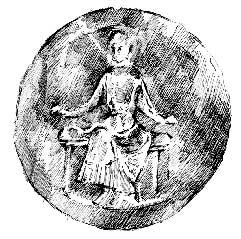

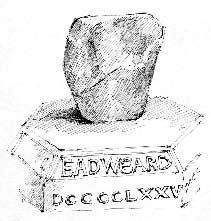
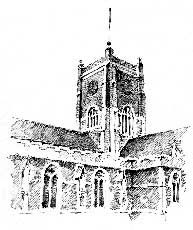

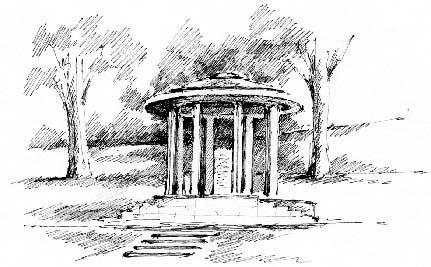
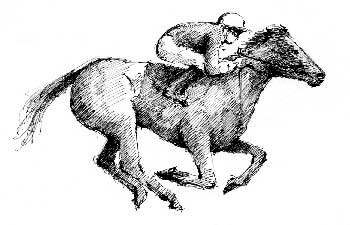
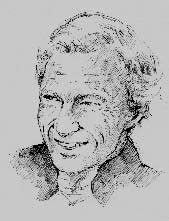


 knew this
knew this 
